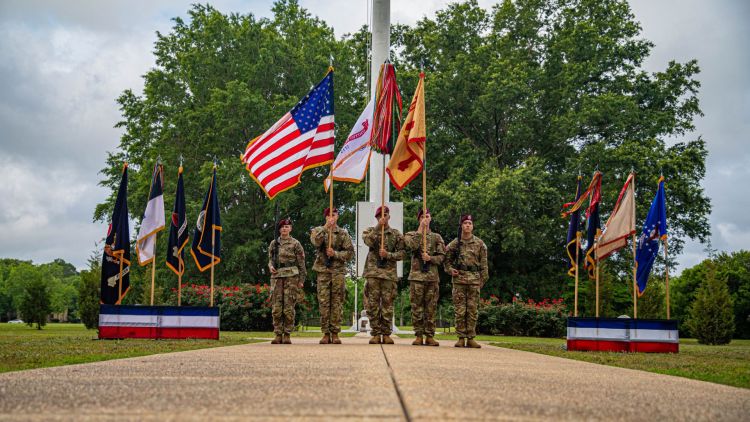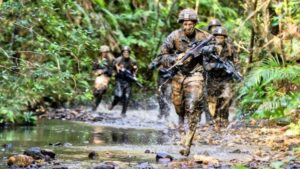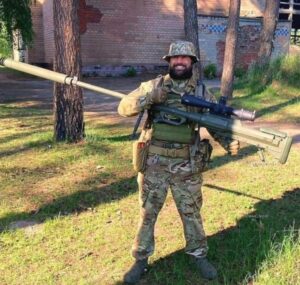The US Army is facing some serious scrutiny after a massive misstep during an anti-terrorism briefing at For Liberty, North Carolina, in July.
What was supposed to be a routine training session for military personnel turned into a PR nightmare when the briefing materials wrongly listed several mainstream activist groups as terrorist organizations.
The incident sparked outrage and raised questions about how such materials were even approved in the first place.
Let’s unpack what happened and why it matters.
What Went Wrong?
It all started when Army personnel at Fort Liberty were going through their usual anti-terrorism training—nothing out of the ordinary. I’m sure most of us have gone through this at least once during our time in service.
But this time, something in the PowerPoint presentation caught everyone’s attention.
The slides, reportedly, lumped in non-violent, mainstream groups like National Right to Life (a pro-life lobbying organization) and PETA (People for the Ethical Treatment of Animals) with known hate groups like the Ku Klux Klan and terrorist organizations such as ISIS. Understandably, people were shocked. There are legal and constitutional challenges to designating domestic groups as terrorist organizations, and most of those designated as such are non-US entities.
To make matters worse, the presentation also mentioned Operation Rescue, another anti-abortion group, as a terrorist organization. Neither National Right to Life nor Operation Rescue has any direct history of violence, making their inclusion in the same category as violent extremist groups seem not just inaccurate but irresponsible.
The US Army is facing some serious scrutiny after a massive misstep during an anti-terrorism briefing at For Liberty, North Carolina, in July.
What was supposed to be a routine training session for military personnel turned into a PR nightmare when the briefing materials wrongly listed several mainstream activist groups as terrorist organizations.
The incident sparked outrage and raised questions about how such materials were even approved in the first place.
Let’s unpack what happened and why it matters.
What Went Wrong?
It all started when Army personnel at Fort Liberty were going through their usual anti-terrorism training—nothing out of the ordinary. I’m sure most of us have gone through this at least once during our time in service.
But this time, something in the PowerPoint presentation caught everyone’s attention.
The slides, reportedly, lumped in non-violent, mainstream groups like National Right to Life (a pro-life lobbying organization) and PETA (People for the Ethical Treatment of Animals) with known hate groups like the Ku Klux Klan and terrorist organizations such as ISIS. Understandably, people were shocked. There are legal and constitutional challenges to designating domestic groups as terrorist organizations, and most of those designated as such are non-US entities.
To make matters worse, the presentation also mentioned Operation Rescue, another anti-abortion group, as a terrorist organization. Neither National Right to Life nor Operation Rescue has any direct history of violence, making their inclusion in the same category as violent extremist groups seem not just inaccurate but irresponsible.
The briefing also conflated PETA, a well-known animal rights group, with the Animal Liberation Front (ALF), a group that has a track record of violent actions like firebombing animal research facilities.
As soon as photos of the presentation went viral, the backlash was swift.
Republicans on Capitol Hill and far-right commentators immediately jumped on the issue, accusing the Army of promoting propaganda.
One of the controversial PowerPoint presentations circulated online in July, sparking a debacle over the Army’s training materials for security briefings. (via X)
Rep. Mark Green voiced his frustration on X (formerly Twitter) days following the training material went viral, saying:
“The American people deserve to know why Fort Liberty displayed training slides conflating pro-life groups with terrorists. How did this propaganda get past Army leadership? And is this happening on other military installations?”
These were valid questions. How could such a glaring error make it into formal Army training, and for how long had it been in circulation?
The Army’s Response
Following the public outcry, the Army quickly stepped in to address the issue.
Army spokespersons clarified that the “slides were developed by a local garrison employee” and “had been in use since 2017.” OK, admitting that they have been wrong for a long time does not necessarily make me feel any better.
They also assured the public that these slides did not represent the Army’s official views or policies and would “be immediately removed” from all training materials.
In addition, the Army announced on Thursday, September 19, a review of its training materials to ensure that such errors wouldn’t happen again. Again, good idea, but shouldn’t this have been done BEFORE the presentation was given to troops and civilian employees?
“The Army is undertaking an Army-wide review to ensure that these or similar materials are not being disseminated elsewhere,” said Agnes Schaefer, assistant secretary of the Army for manpower and reserve affairs.
“The slides do not represent the policy or official views of the Army,” Schaefer added. However, she was vague on the scope of the review, leaving some lawmakers unsatisfied with the level of transparency.
Lt. Gen. Patrick Matlock, who oversees much of the Army’s training, admitted that there was no excuse for how long the erroneous slides had been used but refused to answer questions about whether any disciplinary action had been taken against those responsible.
This reluctance to disclose details frustrated both Republican and Democratic lawmakers, who demanded more accountability and clarity.
The Bigger Issue: Defining Extremism
At the heart of this controversy is a larger issue the military has been grappling with: defining what constitutes extremism.
Since the January 6 Capitol riot in 2021 and the rise of extremist threats in the US, the military has been trying to update its policies on extremism. However, this process has been far from straightforward.
In this case, the briefing at Fort Liberty seemed to blur the lines between legitimate activism and radical extremism.
While groups like the Ku Klux Klan and neo-Nazis were correctly identified as threats, the inclusion of non-violent organizations raised serious concerns about the Army’s approach to identifying extremism.
As Rep. Jim Banks put it during a House Armed Services Committee hearing, “How in the world does something like that go on for so long, and [no one] in leadership catches it?”
Right? Since 2017, man, that’s seven years of teaching and disseminating the training material.
The military has implemented new policies to hold soldiers accountable for expressing extremist views, even when off duty, but defining exactly what qualifies as “extremist” behavior has been tricky.
The mislabeling of peaceful advocacy groups as terrorists highlights just how difficult this task has become—and why it’s so important to get it right.
Why This Matters
This incident at Fort Liberty may seem like an isolated mistake, but it has much larger implications.
The Army’s job is to protect the nation, which includes understanding and responding to threats, both foreign and domestic.
If the training materials used to educate personnel on these threats are flawed or biased, they not only undermine the Army’s credibility but also pose a risk to national security.
Moreover, the controversy surrounding this botched briefing has fueled the growing narrative among some groups that the military is becoming overly politicized. Take, for example, the case of the Campbell County Militia and two top-performing Virginia National Guard NCOs who help operate it.
Republicans, in particular, have expressed concerns that the Army and other branches are leaning too far into progressive ideals, potentially alienating conservatives and undermining recruitment efforts.
Whether or not there’s any truth to that, incidents like this only add fuel to the fire.
You can watch the full House Armed Services Committee hearing on the oversight of extremism policies in the Army below.
What’s Next for the Army?
The Army is now under pressure to clean up its training materials and ensure that this kind of mistake doesn’t happen again.
The review of training materials is a step in the right direction, but more needs to be done to address the broader issue of how the military defines and handles extremism.
Clearer guidelines, more transparency, and better oversight will be essential in preventing future missteps.
At the end of the day, the military must remain nonpartisan and focused on its mission to protect the country. This means ensuring that its training is accurate, unbiased, and based on facts.
By doing so, the Army can rebuild trust and move forward from this controversy.
Final Thoughts
The botched briefing at Fort Liberty was a wake-up call for the Army. It showed just how easily misinformation can slip through the cracks and cause damage. As the Army continues to review its training materials, it’s crucial that it not only corrects these mistakes but also takes steps to prevent them from happening again.
What are your thoughts on the matter? Share it with us down below!
—
Disclaimer: SOFREP utilizes AI for image generation and article research. Occasionally, it’s like handing a chimpanzee the keys to your liquor cabinet. It’s not always perfect and if a mistake is made, we own up to it full stop. In a world where information comes at us in tidal waves, it is an important tool that helps us sift through the brass for live rounds.



